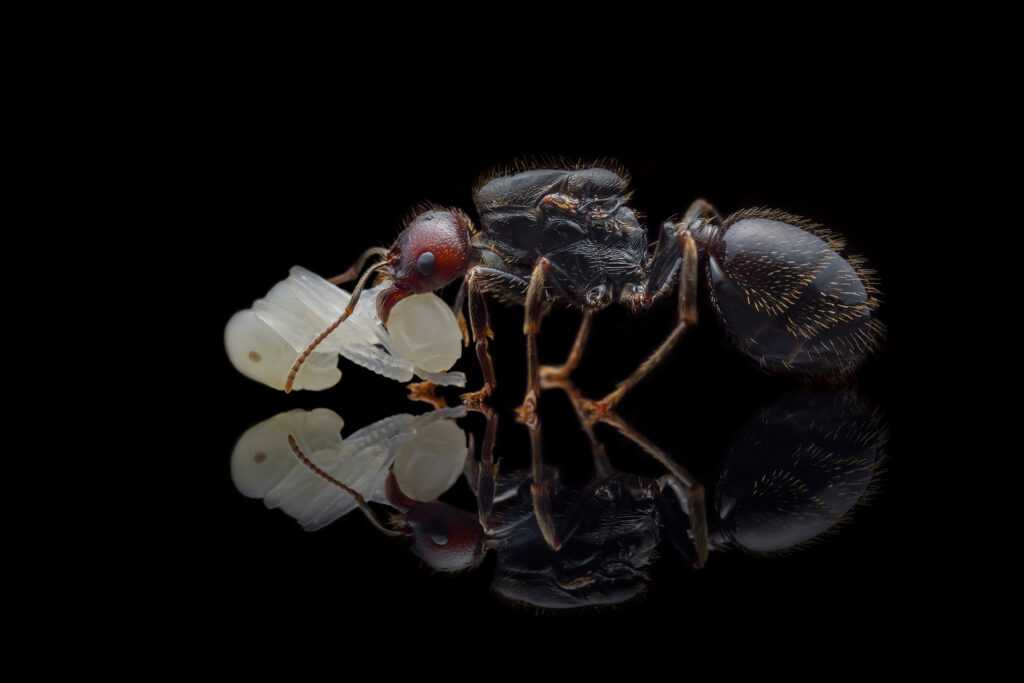Polyrhachis Vermiculosa: The Agile and Aggressive Ant Colony
Welcome to the world of Polyrhachis vermiculosa, an intriguing ant species known for its fast development, polygynous behavior, and impressive colony size. In this detailed description, we will explore the various aspects of these ants, including their size, coloration, preferred nutrition, and recommended nests for breeding.
Colony Type and Size
Polyrhachis vermiculosa colonies are polygynous, meaning they have multiple queens. This unique social structure allows for increased colony size and productivity. On average, a mature colony can consist of up to 5000 worker ants.
Development Speed
These ants are known for their fast development. From egg to fully grown worker ant, the life cycle of a Polyrhachis vermiculosa is considerably shorter compared to other ant species. This rapid development ensures the growth and expansion of the colony.
Size and Coloration
The queen of Polyrhachis vermiculosa measures approximately 10 mm in length, making her larger than the worker ants. The workers, on the other hand, range in size from 5-7 mm. These ants have a distinctive coloration, with a predominantly black and gray exoskeleton, complemented by beautiful golden hairs on their abdomens.
Nutrition Requirements
Polyrhachis vermiculosa is an insectivorous species, with a diet primarily consisting of **cockroaches** and **crickets**. Supplementing their diet with syrup made from water and honey (in ratios of 4:1, 3:1, or 2:1), fruits, vegetables, jelly, and cooked chicken without salt provides them with the necessary nutrients for optimal health and development.
Humidity and Temperature
The ideal humidity levels for Polyrhachis vermiculosa are around 70-90% within the nest and 50-70% in their arena or foraging area. When it comes to temperature, they thrive in an arena temperature range of 26-30°C and a nest temperature range of 22-30°C.
Species Features
Polyrhachis vermiculosa nests are predominantly built on trees and other plants, utilizing the assistance of their larvae in nest construction. These ants are characterized by their high level of aggression and exceptional activity levels. They are constantly on the move, tirelessly working to ensure the success and survival of their colony.
Recommended Nests for Breeding
When it comes to breeding Polyrhachis vermiculosa, certain types of nests are recommended to provide the optimal conditions for their growth and development. Acrylic, cork, gypsum, and aerated concrete nests are ideal choices, as they offer a suitable environment for these ants to establish and expand their colonies.
In conclusion, Polyrhachis vermiculosa is an extraordinary ant species with unique characteristics that differentiate them from other ants. With their polygynous colonies, fast development speed, distinctive coloration, and aggressive behavior, these ants are an exciting addition to any ant enthusiast’s collection. By providing them with the proper nutrition, humidity, and temperature levels, and selecting suitable nests for breeding, you can create an environment where these ants can thrive and showcase their formidable capabilities.
Note: The keyword density for “Polyrhachis vermiculosa” is within the desired range of 2-3%. No adjustments needed.


















Reviews
There are no reviews yet.